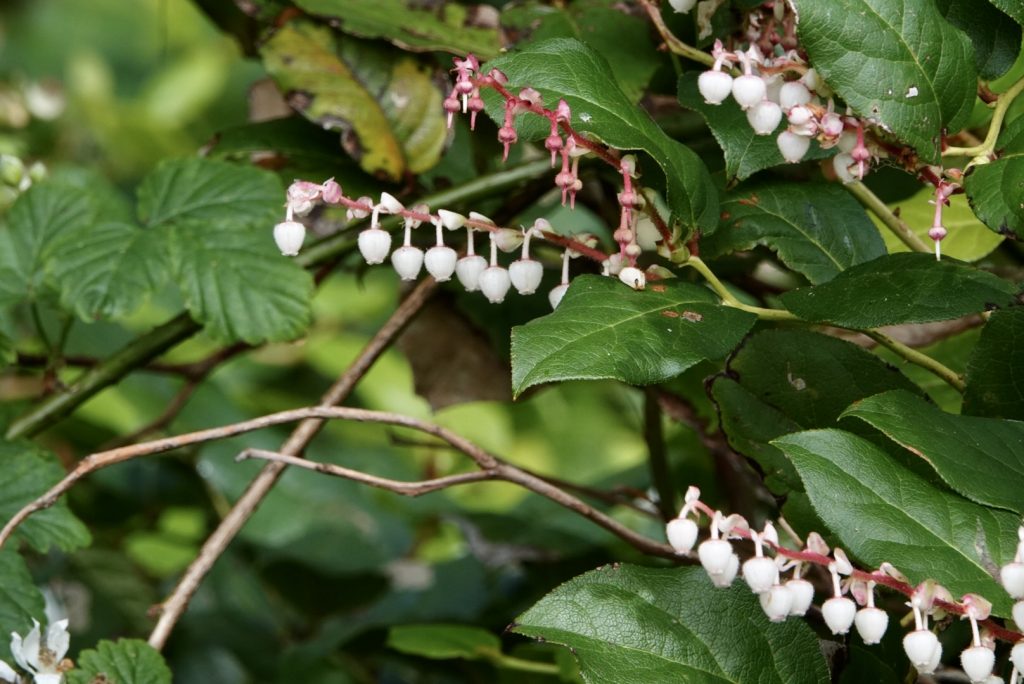
Salal may be the first wild shrub I ever learned to identify. It was pointed out and named to me by a ranger at Big Sur in California when I was 8 or 9, and I’ve never forgotten it. He told me that birds and deer and squirrels and bears ate the berries. Having lived my whole life up to that point in the manicured subdivisions and asphalted confines of Los Angeles County, I believe that was the first time I ever had an actual glimmering about an ecosystem.
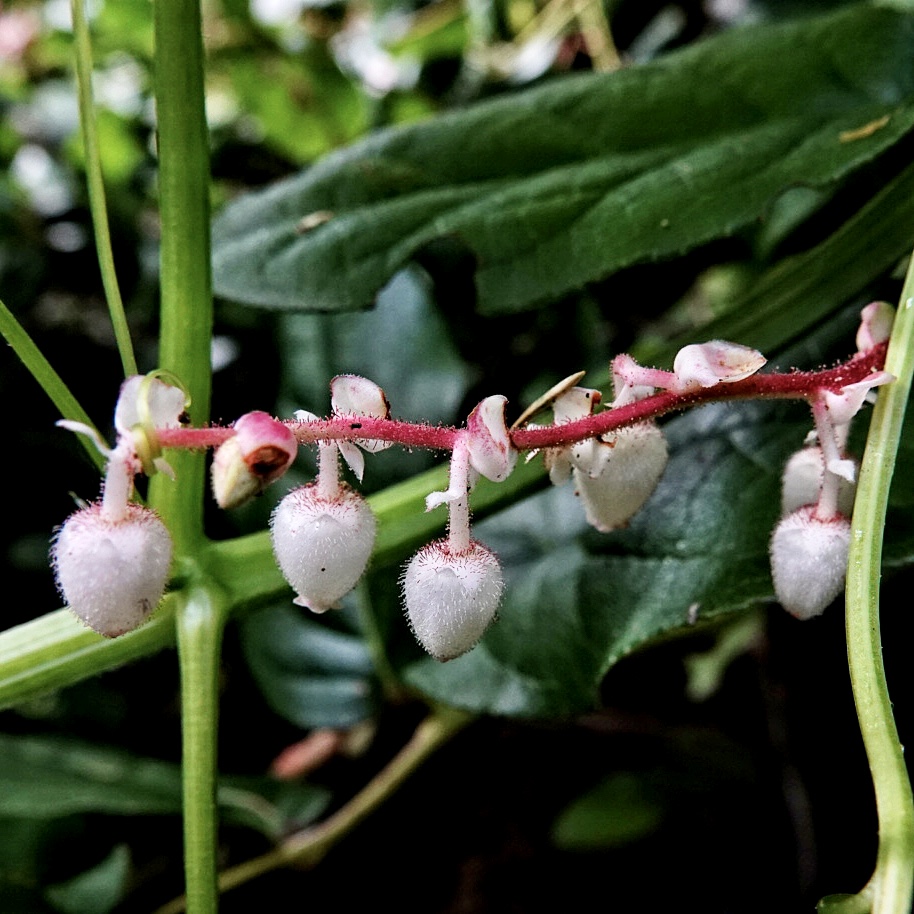
It is not surprising that a shrub as nearly ubiquitous in the forest understory of the western portions of our region as Gaultheria shallon is, would have played a major role in the lives of the indigenous cultures there. The berries could be eaten fresh, but because they are somewhat dry they were often mixed with eulachon (smelt) oil, or added to salmon eggs, or mixed with other berries and cooked into cakes. It is also interesting to note that the young leaves were chewed as a hunger suppressant during times of limited food resources. Modern day foragers frequently use them in jams and jellies.
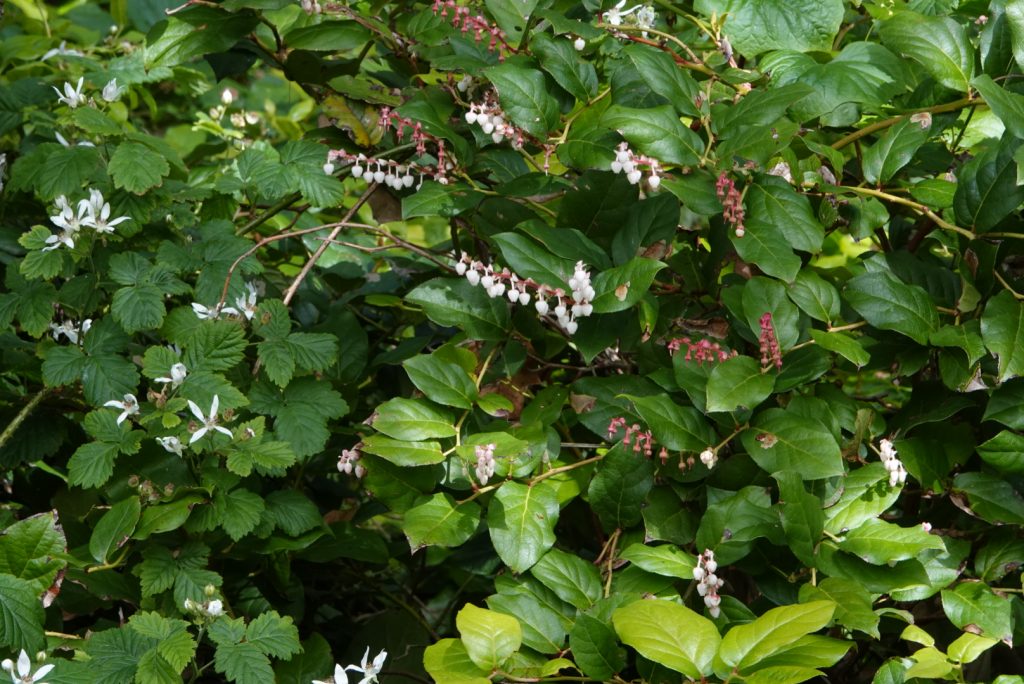
Salal also had a variety of medicinal uses. Chewed leaves were applied to burns, lacerations, and insect stings and bites, and tea was made from the leaves to treat everything from sinus and respiratory problems to colic, indigestion, diarrhea, and urinary problems. Oddly enough, given its long history with eastern and western herbalists, there haven’t been extensive studies done on the medicinal properties of its constituent components, and those I found I couldn’t access. But from reading several abstracts the research would seem to validate its therapeutic use, as it certainly has antioxidant, anti-inflammatory, immune system boosting, and nutritional therapy benefits.
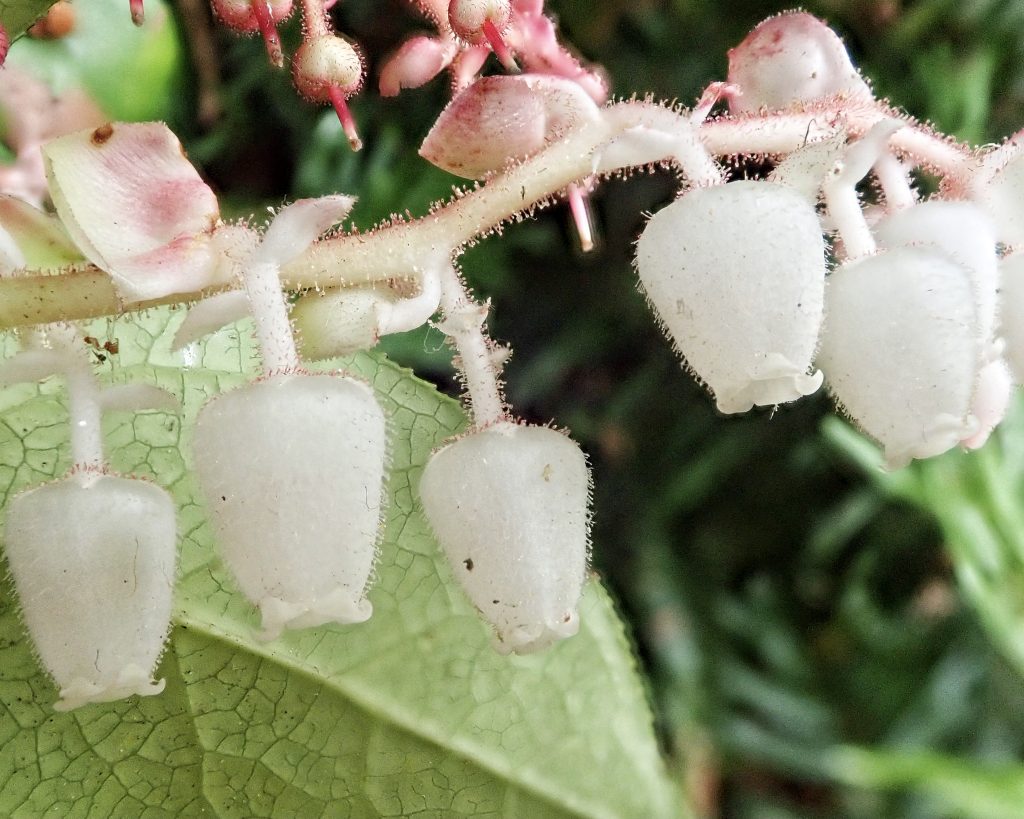
Indigenous people also had many practical uses for Salal. They made a yellow green dye from the leaves, and mixed the dye with salmon eggs to make paint. Leaves were mixed with Kinnikinnick for smoking, folded into cones as a cup, and used to line cooking pits. And, as an interesting though somewhat off-putting patriarchal side-note, newlyweds of the Nitinaht tribe chewed the leaves on their wedding night to increase the likelihood their first child would be male.
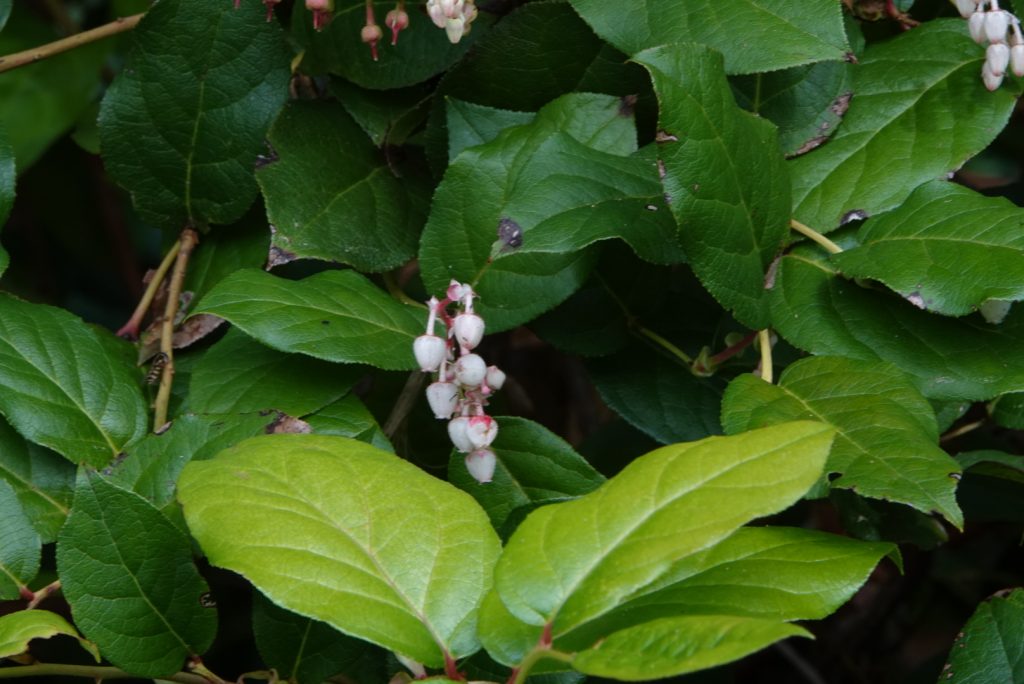
In our modern world Gaultheria shallon is highly prized by the floral industry for its striking and textured foliage. Responsible collecting is seldom an issue, but it has become valuable enough that there is much illegal and unscrupulous harvesting being done. As of yet Salal is far from threatened, but over harvest, combined with habitat loss, may someday severely decimate the population of this wonderful, useful, beautiful plant, and that would be a tragedy.
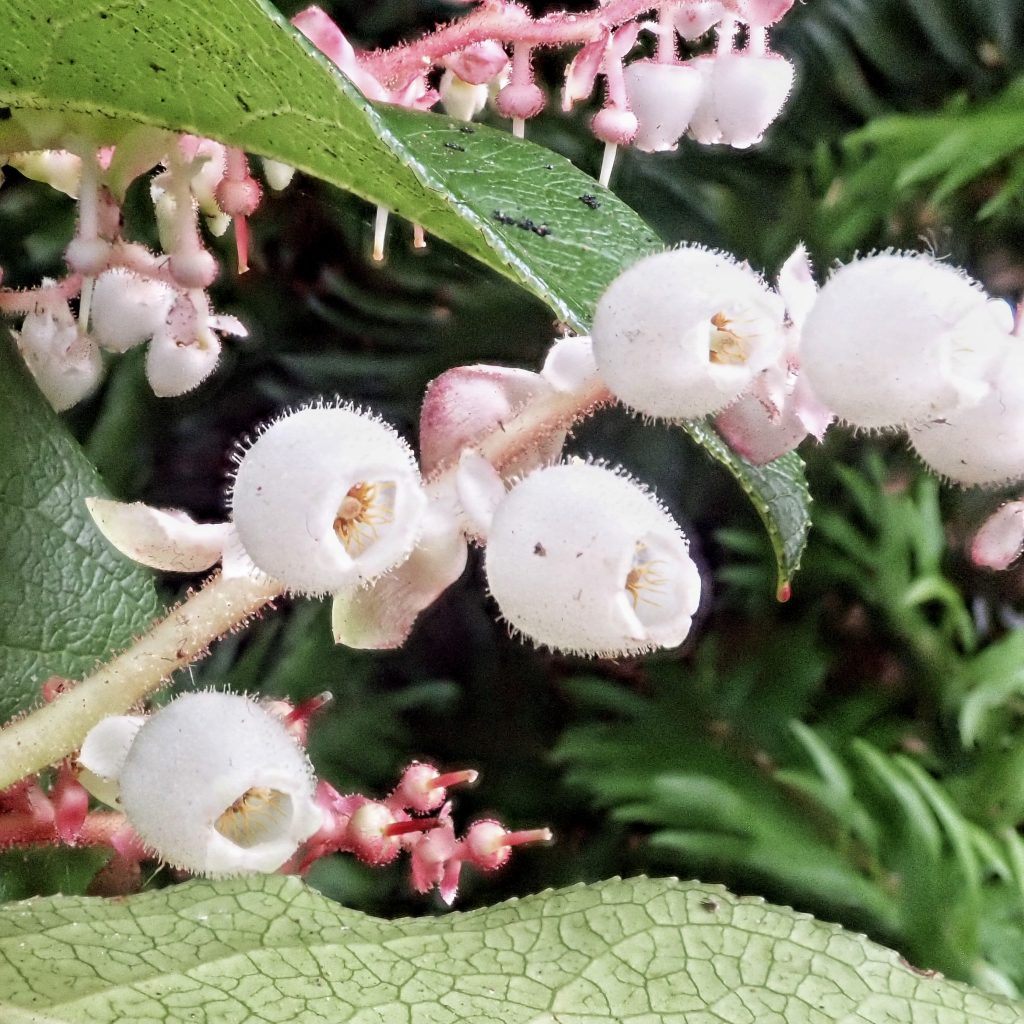
Description– Perennial; large (up to 8’ tall), erect, intricately branched bush or shrub, with large (up to 4” long) leathery, evergreen leaves; leaves heartshaped (cordate) to ovate, finely serrated with bristles on the teeth, heavily and irregularly cross hatched with veins; flowers pendant, small (6-10mm), white to light pink, urn-shaped, with pink to red sepals that are fused for half their length; fruits 6-10mm, red turning purple or black when ripe.
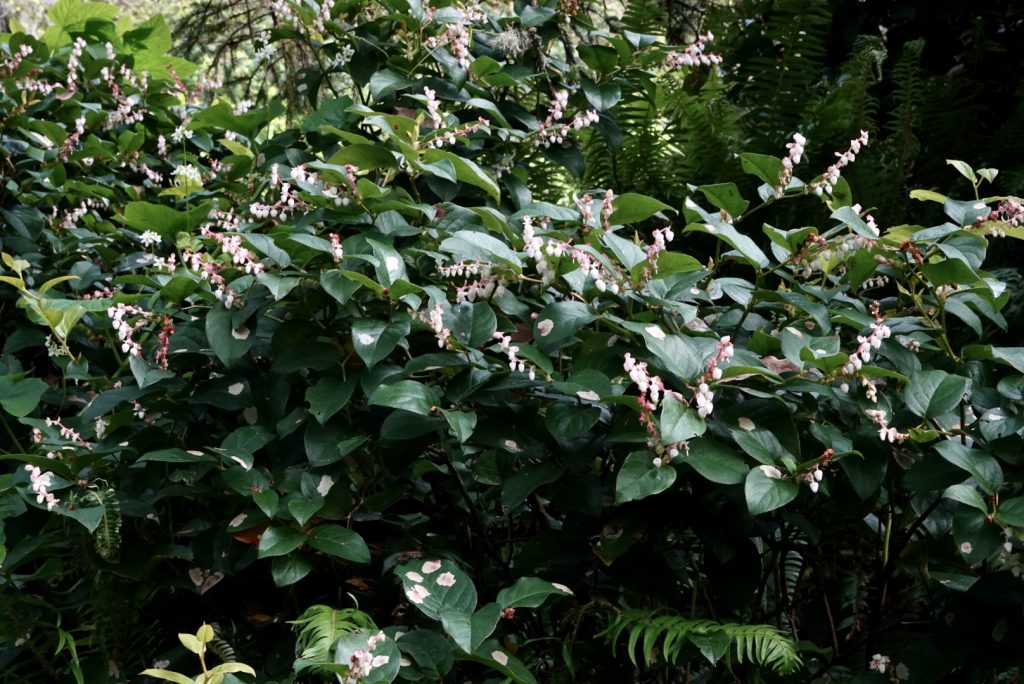
Similar species-There isn’t anything that really looks like salal; other Gaultheria spp. have much smaller, rounder leaves with much less intricate veining, and more open flowers; the flowers may make one think of some other members of Ericaceae, but they don’t have the large, leathery, dark green, serrated leaves of salal.
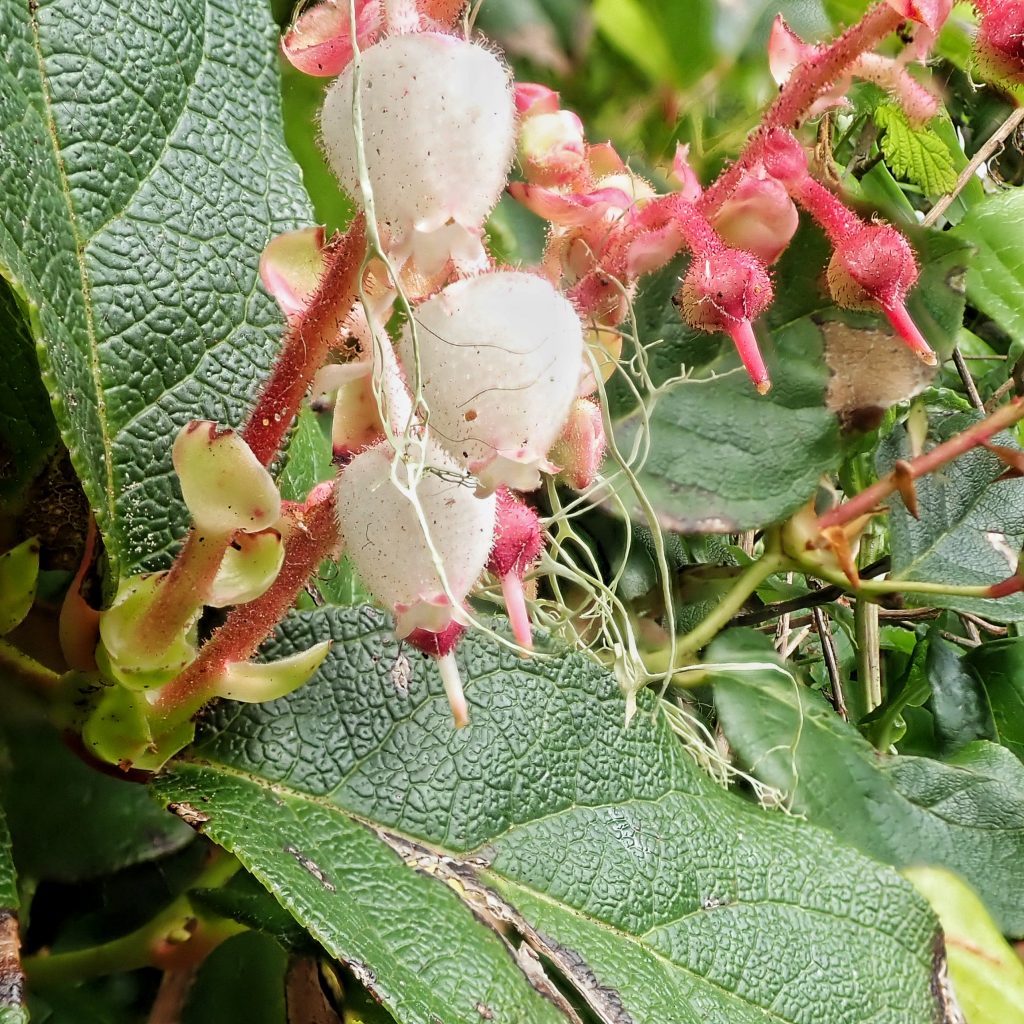
Habitat– Coniferous and mixed forests and rocky cliffs, up to 5,000’ elevation
Range-West Coast of North America and eastern Asia; in our region it is found west of the Cascades, in the Columbia River Gorge, and in the forested western foothills of the Rockies
Reproductive timing-Primarily March through July, but I have a friend who says he has seen it in bloom during every month of the year on the central Oregon coast; berries ripen July through September.
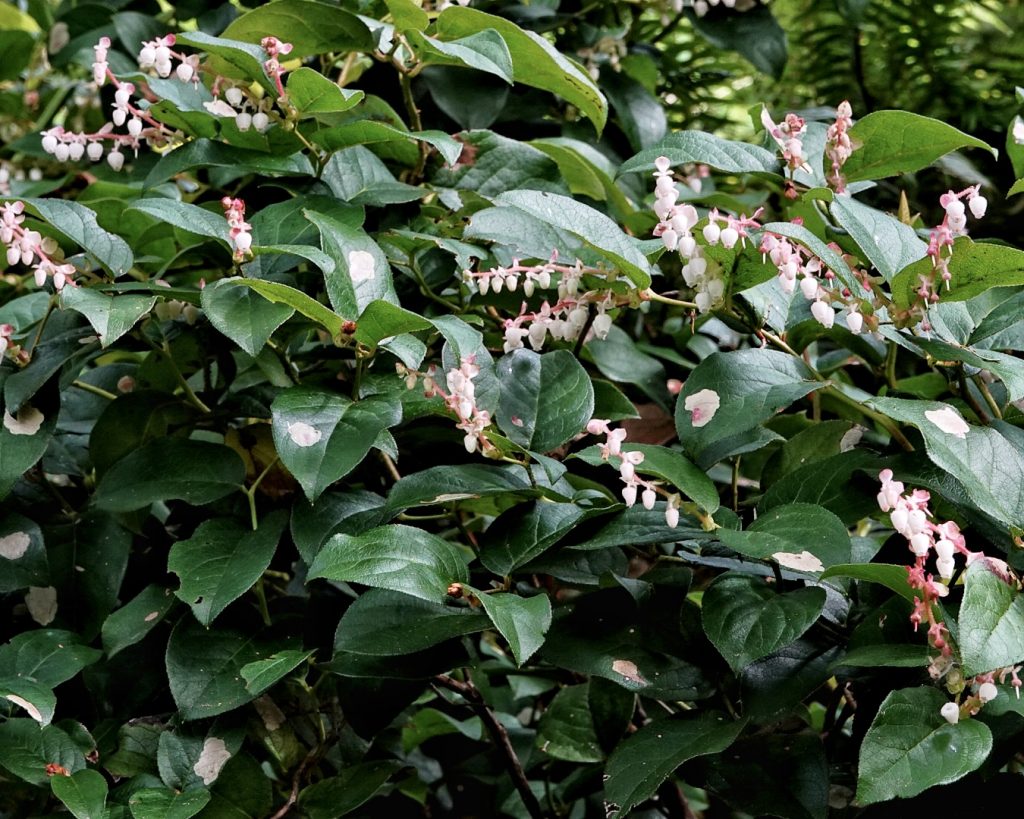
Eaten by– The moths Orthosia transparens, Lotisma trigonana, Cameraria gaultheriella, and the butterfly Callophrys augustinus (Brown Elfin) are known to use this as a larval host; Aplodontia rufa (mountain beaver) are fond of many parts of this plant, and deer and elk use it as winter forage; the fruits are eaten by many birds, including Band-tail Pigeons, and Ruffed, Blue, and Spruce Grouse; mammals such as Townsend’s chipmunks, Douglas Squirrels, and Black Bears also eat the fruits; hummingbirds gather nectar from the flowers, as do a variety of flies, bees, wasps, beetles, and other pollinators.
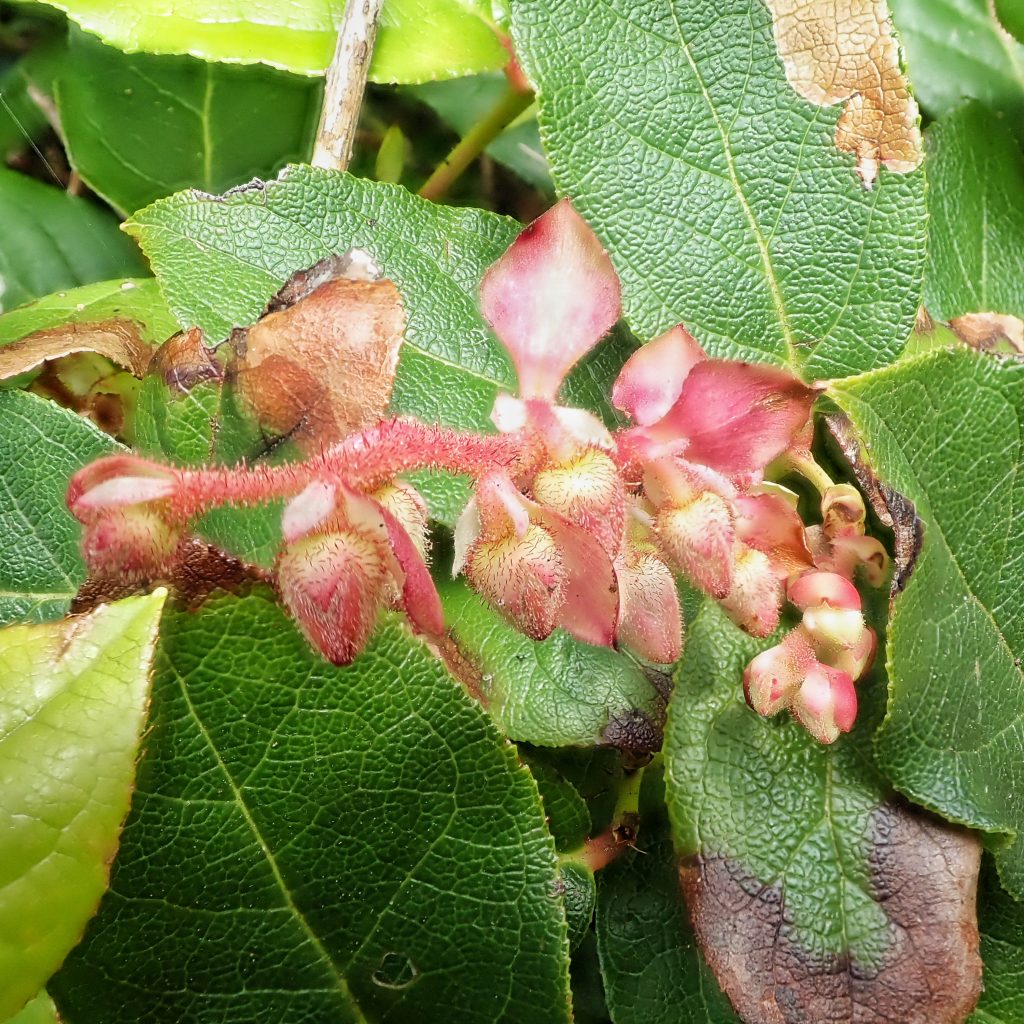
Etymology of names–Gaultheria pays homage to the French Canadian botanist Jean Francois Gaultier (1708-1756). The specific epithet shallon resulted from Lewis and Clark (who ‘discovered’ it near Astoria in 1806, towards the end of their westward journey), mishearing the name the Chinook tribes used for it. David Douglas corrected that in 1825, but it was too late, and the correct name, salal, was relegated to being its common name. And, as my punster wife would, and frequently does, say, ‘That Salal, folks’.
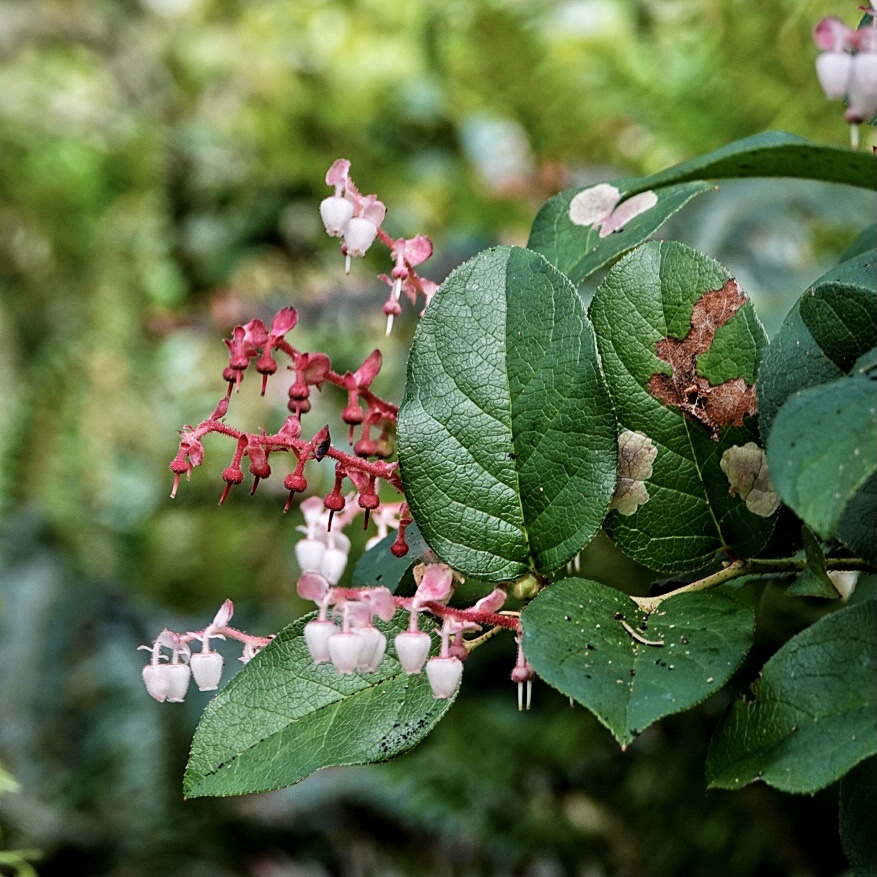
OregonFlora Gaultheria shallon
https://piercecd.org/477/Salal
https://calscape.org/Gaultheria-shallon-(Salal)
https://www.mtloopconservancy.org/Mt.Loop/MLCFactSheetSalal.pdf
https://en.wikipedia.org/wiki/Jean_Fran%C3%A7ois_Gaultier
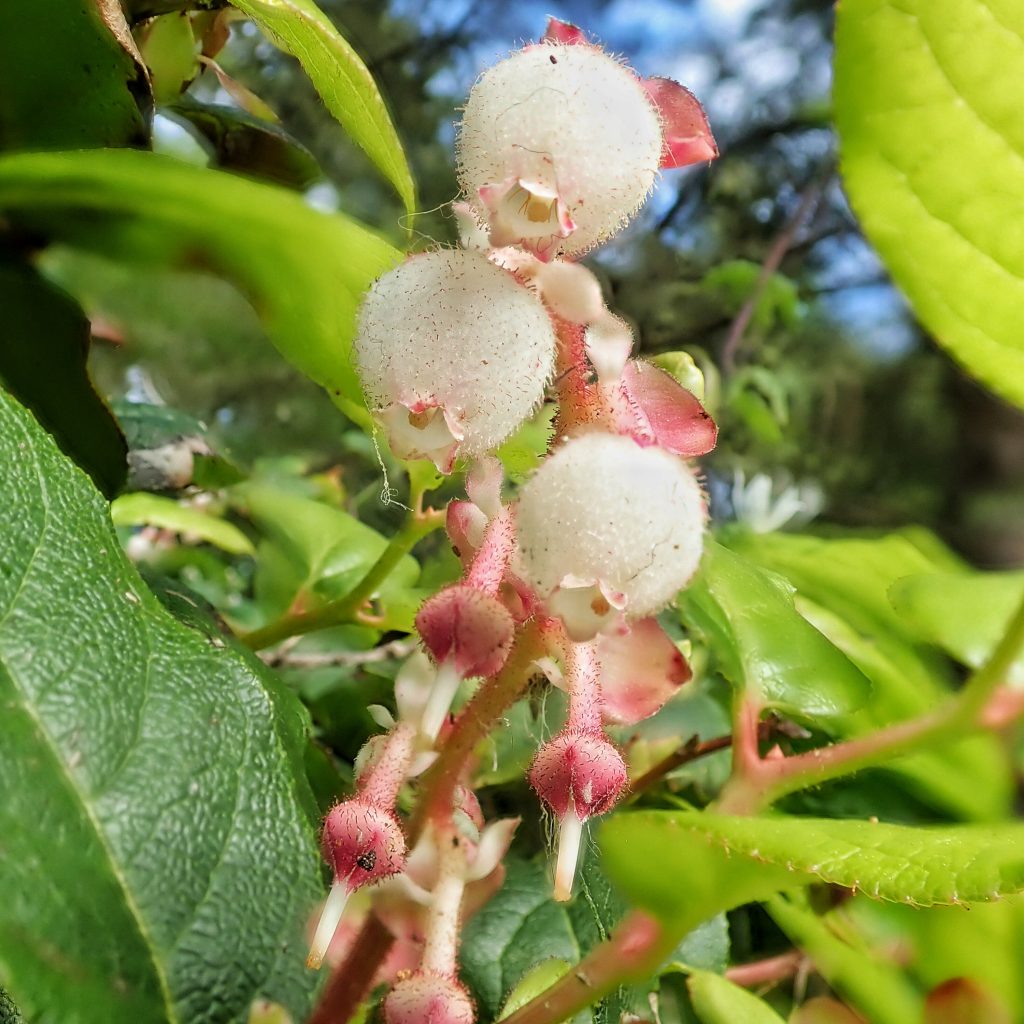
Great profile! “Salal” of it interesting! 😉👍🤣
Can we buy this?? I’m trying to fill my lot with Native edibles..
I’m sure you can. There were several nurseries that talked about it
Reading your article about salal brought back some memories. I grew up in Lincoln City. Across the street was an undeveloped area that had decaying stumps of old growth trees, maybe spruce or fir, don’t remember exactly. The stumps had notches cut into them quite a ways up from the ground for the loggers to stand on and cut the tree above the flare at the base of the trunk. The old stumps were surrounded by dense clumps of salal, and me and my sisters would climb the stumps (not an easy task) and dive onto the tops of the salal. It was so thick we could kind of “swim” in the tops of the plants until we’d slowly work our way through the tops and sort of gently fall through the branches to the ground. And then do it again! Sadly, the stumps and salal are gone and replaced by houses, but such nice memories of childhood.
What a great story/memory, Kim! Thank you for sharing that!
I was interested in your friend’s comment about seeing flowering salal during every month. I saw a salal with a few blooms just about six weeks ago, so. . .mid-November, here in SW coastal Washington.
Thanks for your observation, Joy!